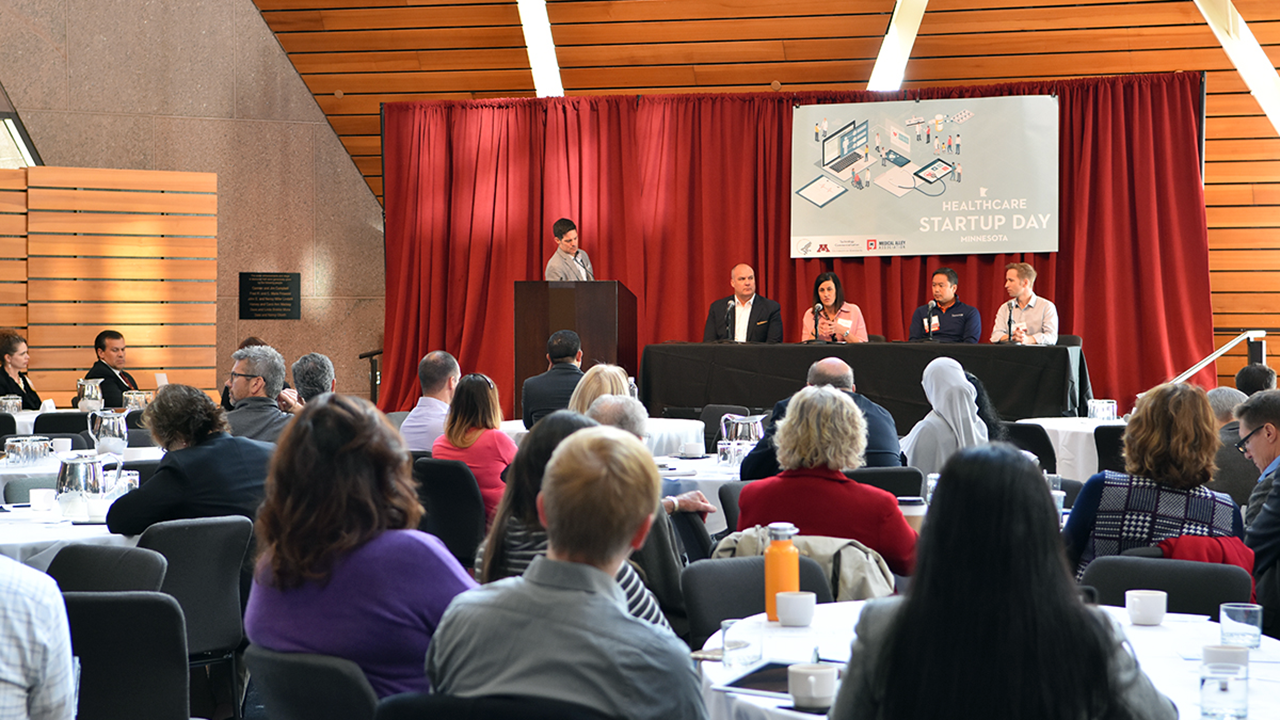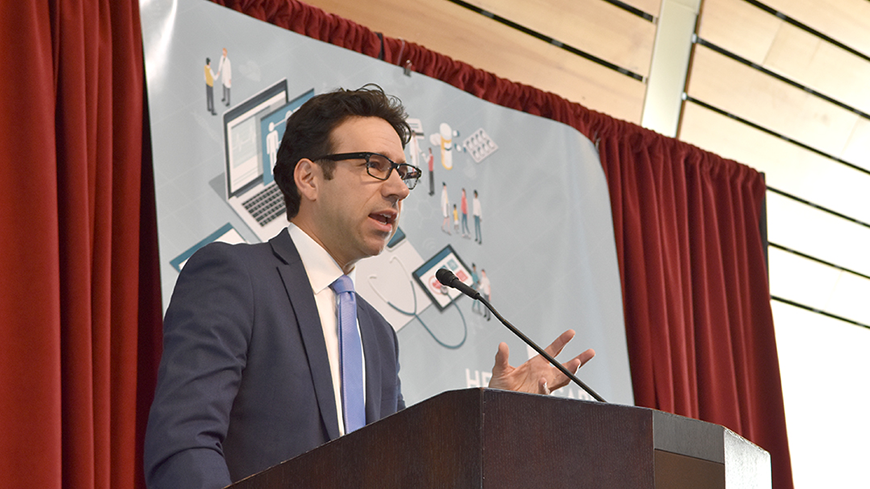
As Minnesota’s ecosystem of healthcare innovation continues to grow, one federal department is looking for ways to increase collaboration with startups, industry leaders, and academic researchers in the state.
On October 15, the University of Minnesota and the Medical Alley Association hosted Healthcare Startup Day Minnesota, an event to welcome representatives from the US Department of Health and Human Services (HHS) along with healthcare startup leaders and entrepreneurs. The event allowed HHS representatives to share their insights on healthcare collaboration and connect with Minnesota’s thriving healthcare ecosystem to build relationships with local entrepreneurs and industry leaders.
HHS includes several major federal agencies, like the National Institutes of Health, the Food and Drug Administration, and the Centers for Disease Control and Prevention, along with other agencies and offices. The department’s visit came in the middle of a two-year national tour to meet healthcare entrepreneurs in their local ecosystems and explore how to better support startups, while demystifying the agency’s vision, priorities, and processes.
The Twin Cities mark an important destination to include, given that Minnesota is home to Medical Alley—a cluster of some of the most innovative health care providers and health technology companies in the world, bolstered by leading medical research from the U of M and Mayo Clinic. Additionally, Minneapolis was ranked earlier this year as the third-best city for startups and entrepreneurs.
Rick Huebsch, executive director of U of M Technology Commercialization, said the University has a long track record of bringing medical devices, diagnostics, pharmaceuticals, and more to the public through the launch of startup companies.
“We were excited to better connect with the federal agencies under HHS and find new ways to support the success of startups bringing healthcare technologies to market in Minnesota through the University’s Venture Center,” Huebsch said.
The event featured representatives from key HHS agencies involved with healthcare and innovation, such as the HHS IDEA Lab, which explores, tests, and accelerates solutions that improve the delivery of health and human services. The speakers discussed subjects including reimbursement issues, proposed regulations, and how to access federal funding programs in Minnesota.
Edwin Simcox, chief technology officer and chief information officer with HHS, said the department has increased its focus on collaborating with academia and the private sector.
“By working with startups, the U of M, and larger commercial entities on innovation—this is the way that we at HHS are going to bend the cost curve of health care and help improve treatment outcomes,” Simcox said.
In addition to representatives from federal agencies, the event featured speakers, panels, and business plan presentations that showcased Minnesota’s thriving healthcare innovation space. The event closed with a series of pitches from local healthcare startups.

Healthcare Innovation at the U
Federal funding from agencies and offices within HHS fuels a large portion of the research enterprise. In fiscal 2017, U researchers successfully competed for over $269 million from these agencies, which includes $244 million from the National Institutes of Health. In total, HHS funding made up about 36 percent of the U’s total external research funding, helping to fuel the discovery of new healthcare technologies, from medical devices to pharmaceuticals.
U of M Technology Commercialization licenses these new discoveries to existing companies to move them beyond the lab and into the market, where they can reach the patients and care providers they were designed to help. Through its Venture Center, Technology Commercialization also launches new companies, led by seasoned entrepreneurs, to help high-potential technologies reach the market.
Since its founding in 2006, the Venture Center has launched more than 130 companies that have raised over $400 million in investment capital. Three out of four of these are based in Minnesota, where they contribute to the state’s economic growth, bring in outside investment, create high-paying jobs, and spur economic development.
Photos: Holly Santiago, OVPR